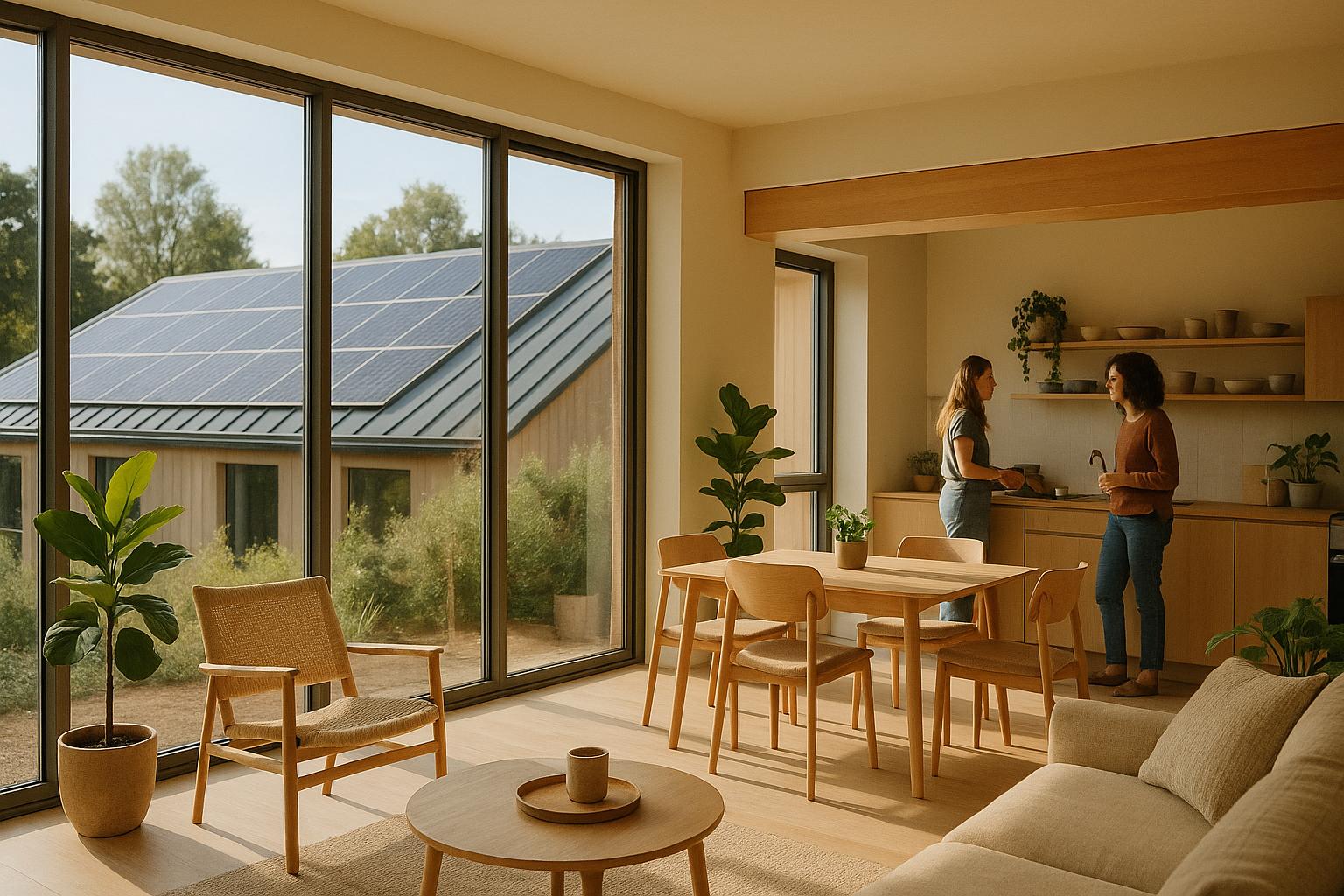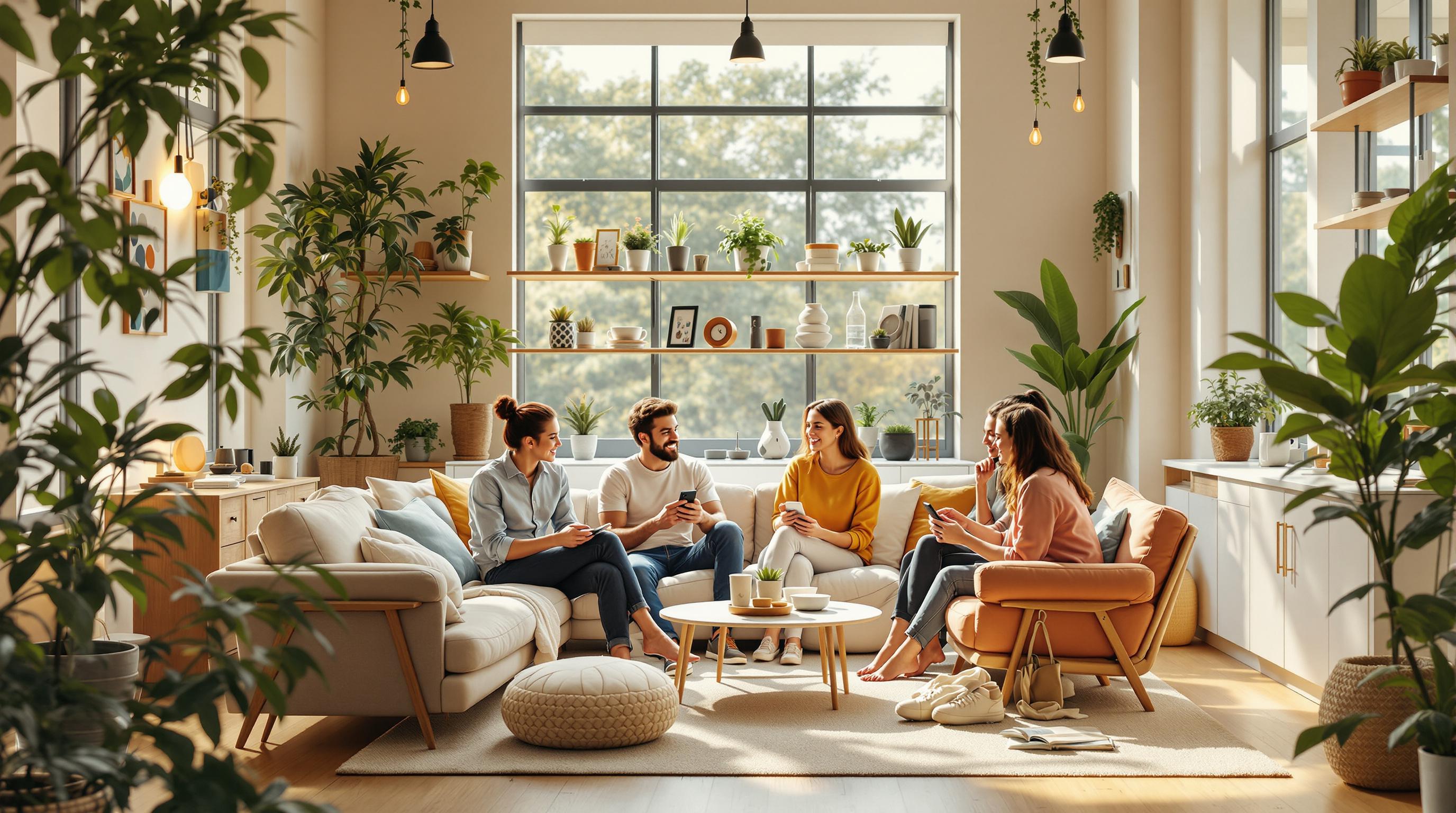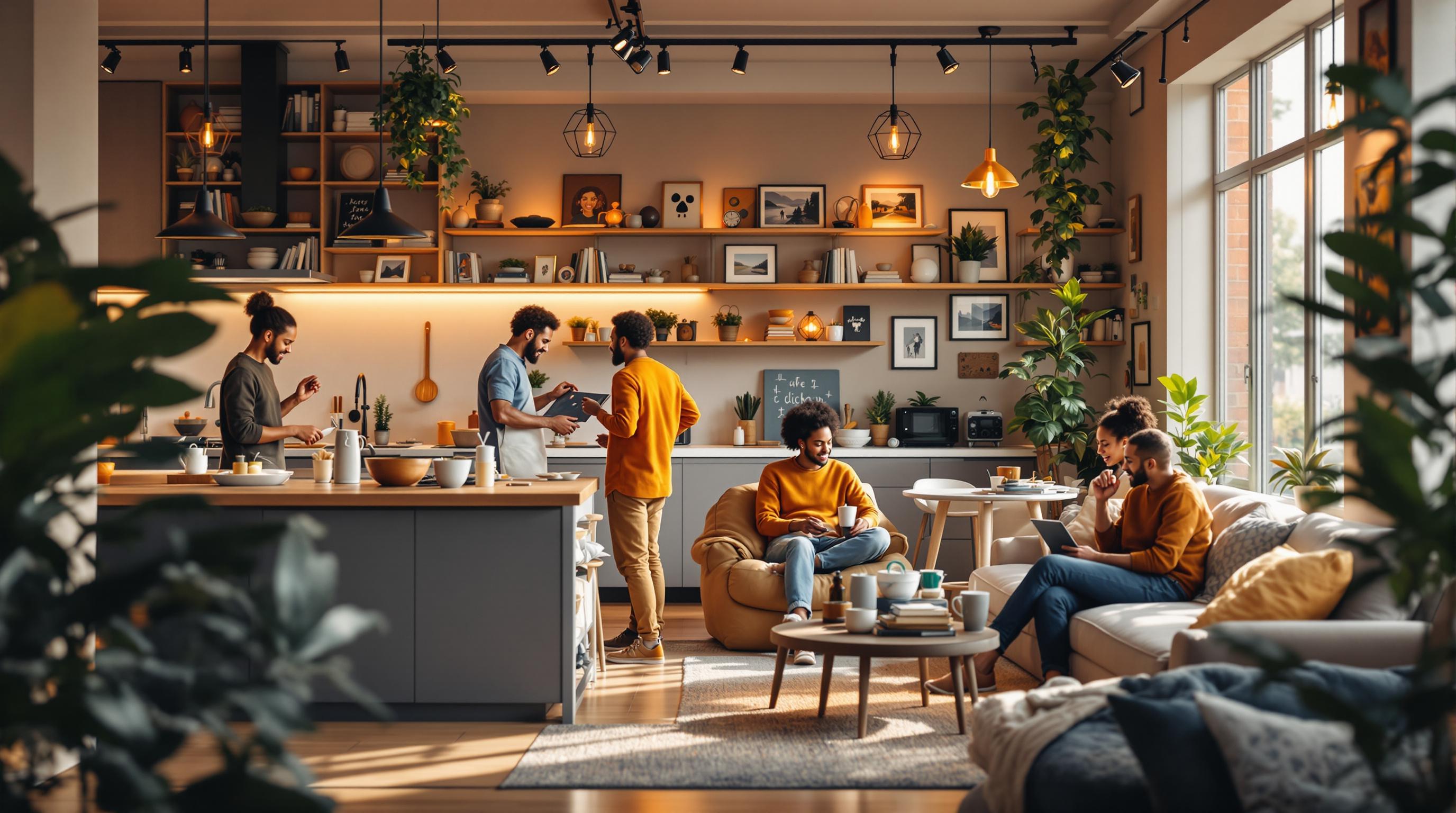Colors can change how shared spaces feel and function. Here's how you can use them effectively:
- Warm colors (red, orange, yellow): Energize and encourage social interaction. Great for living rooms or kitchens.
- Cool colors (blue, green): Promote calm and focus. Ideal for study rooms or meditation spaces.
- Neutral colors (beige, gray, white): Balance and flexibility. Perfect as base tones for any space.
Key tips to apply:
- Use the 60-30-10 rule: 60% dominant color, 30% secondary, 10% accent.
- Match colors to the room's purpose: Warm tones for socializing, cool tones for relaxing.
- Start with neutrals and add color through decor like pillows or rugs.
Colors not only set the mood but also impact how people connect and interact in shared spaces. Small updates, like changing decor, can refresh a room without major renovations.
Main Color Psychology Rules
Color psychology plays a key role in designing spaces that feel inviting and functional. While cultural meanings can influence how colors are perceived, there are some universal principles that help you choose a palette that works well in shared environments.
Warm, Cool, and Neutral Colors
- Warm colors: Shades like red, orange, and yellow bring energy and encourage social interaction. They're great for lively spaces.
- Cool tones: Blues and greens promote calmness and focus, making them ideal for areas where concentration or relaxation is needed.
- Neutral shades: Colors like beige, gray, and white offer balance and flexibility. These are perfect as base colors that pair well with both warm and cool accents.
Physical Effects of Colors
The intensity and brightness of a color can change how a space feels. Bold, saturated colors grab attention and add energy, while softer, muted tones create a more calming vibe. Light colors make rooms feel larger and more open, whereas darker shades add a sense of intimacy. Adding contrast between colors can also help define different areas and guide movement within shared spaces.
Application in Practice
Tailor your color choices to the purpose of each room:
- Use cool tones like blue or green in study areas to boost focus.
- Add warm shades in social spaces to encourage interaction.
- Neutrals work well in transitional spaces like hallways to maintain a smooth visual flow.
For a balanced look, try the 60-30-10 rule: dedicate 60% of the space to a dominant color, 30% to a secondary color, and 10% to an accent color. This layering approach creates a cohesive and visually appealing environment.
Next, we’ll explore how these guidelines can be applied to specific rooms.
Colors for Different Room Types
Once you understand the basics of color, you can customize each room's palette based on its function and how people interact in the space.
Living Room Colors
For a calming yet inviting living room, consider these proportions: 60% muted blue for the walls to create a relaxing atmosphere, 30% neutral gray for furniture to provide balance, and 10% burnt orange for accents to add warmth and encourage conversation (refer to Main Color Psychology Rules). You can take a similar approach when planning colors for kitchens and dining spaces.
Colors' Effect on Group Living
Color plays a key role in shaping how people interact in shared spaces.
Social Effects of Color Temperature
Warm shades like terracotta and soft yellow encourage conversation and create a welcoming atmosphere. However, too many warm tones can feel overwhelming, while an excess of cool tones might dampen interaction. Here's how these ideas translate into color choices for specific areas.
Relaxing vs. Active Color Schemes
- Community kitchens and workout areas: Shades like coral, yellow, and lime can energize and spark interaction.
- Study rooms and meditation spaces: Colors like sage, blue-gray, and lavender promote relaxation and focus.
- Living rooms and shared workspaces: Warm beige, soft white, and muted blue create a balanced and versatile environment.
Color Family Guide
- Earth tones: Ideal for grounding entry halls and shared lounges.
- Blues and greens: Perfect for calm and focused areas like study spaces and reading nooks.
- Warm neutrals: Add a welcoming warmth to community kitchens and social spaces.
- Cool neutrals: Offer a calm, professional feel in co-working and meeting areas.
- Jewel tones: Use as accents to energize group gathering spots.
Start with a neutral base and layer in color through items like pillows, artwork, or rugs. This approach makes it easy to adjust as residents' preferences shift over time.
Using Colors in Shared Housing
Collaborating with Residents
Get residents involved in choosing colors by using quick polls or group chats. This helps make sure the color choices reflect everyone's preferences and create the right atmosphere for the group.
Adding Color with Furnishings and Decor
Easily update the space's look by switching out items like textiles, artwork, lighting, or decorative accents. No need for major renovations - small changes can make a big difference.
Conclusion
Color psychology plays a key role in shaping shared living spaces. Warm colors can energize social areas, while cool tones promote calm and focus. Using simple strategies like the 60-30-10 rule and swapping out decor pieces makes it easy to refresh spaces without expensive renovations. These approaches help create inviting, functional homes that can evolve with the needs of the people living in them.






